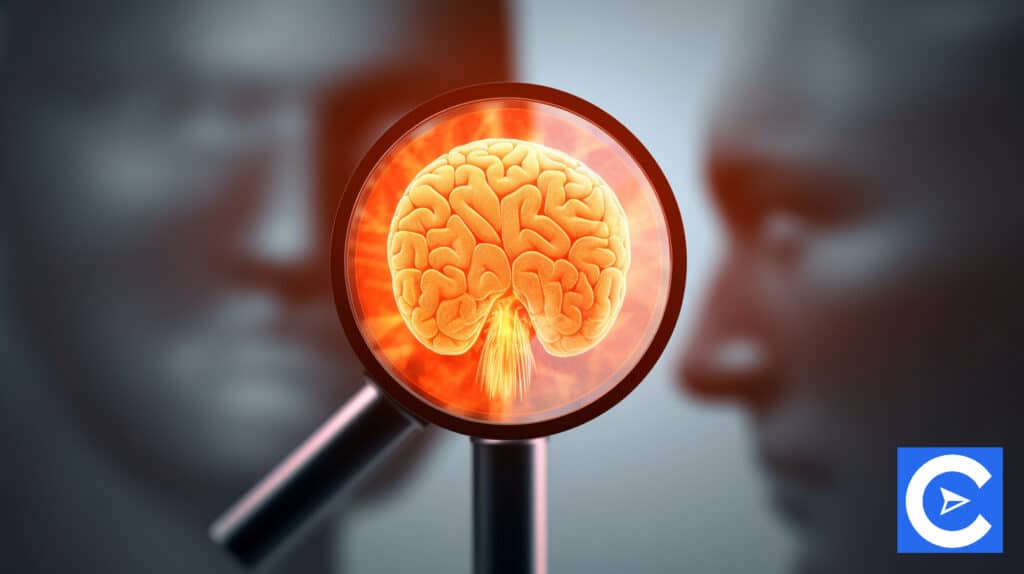Other Free NCLEX PN Study Guides:
There are 8 Modules in NCLEX PN Study Guide. Here you can navigate all the NCLEX PN Study guide modules.
- NCLEX Study Guide Home
- Module 1 | Coordinated Care Of the Patient
- Module 2 | Overall Safety and Control of Infections
- Module 3 | The promotion of health and maintenance
- Module 4 | Integrity in psychosocial functioning
- Module 5 | Providing Basic Care and Ensuring Patient Comfort
- Module 6 | Therapies: Pharmacological and parenteral
- Module 7 | Potential risk reduction
- Module 8.1 | Adapting physiologically
- Module 8.2 | Adapting physiologically
- Module 8.3 | Adapting physiologically
let’s get started right away.
Family dynamics

Families by type
There are 10 different types of families in your coursework.
They are listed below:
- Nuclear family: Typical 50 years ago, with the husband providing for the family and the mother staying at home. Modern families are only structured like this in 7% of cases.
- Dual career/dual earner: More than 66% of American families have both parents working, so this is very common today
- Childless: Around 10% to 15% of American families are childless by choice or through infertility
- Extended: Families living in this kind of setup share households with other relatives, family members, or even friends.
- Extended kin network: This type of family is characterized by the sharing of goods, services, childcare, and overall support between two nuclear families living nearby. In the Hispanic community, this model is most prevalent
- Single-parent: This is one of the fastest-growing family models in today’s society. If a spouse dies or divorces, either parent takes on the role of a single parent. Single parents are often unmarried. It is common for children who don’t live with one of their parents to have very little contact with them
- Coparenting/bi-nuclear: This type involves two nuclear families sharing time with their children under a joint custody arrangement. Both parents are able to maintain relationships with their children in this scenario
- Step-parent: High divorce rates in America make this a common family type. In many cases, this can result in conflict when a new baby is born to either parent or step-parent
- Cohabiting: Unmarried heterosexual couples live together as cohabiters. Relationship bias can take many forms in this model. Some families may be based on the nuclear family model, for instance. The parties involved aren’t interested in getting married for several motives. Relationship dynamics can change depending on whether a child arrives planned or unplanned
- Same-sex: Most couples marry or cohabitate in this setup. When it comes to children, there are various options, such as surrogates or sperm donation.
Family theory
Various family theories are the most important thing to cover in this section.
First, we have family developmental theory.
The idea here is that over time, a family will go through different stages of development and when they do, these stages are related to certain tasks that are carried out.
These stages include:
- Marriage
- 1st child born
- Preschool children
- School-age children
- Teenagers
- Launching adult children
- The empty nest
- Aging family
Second, we have the structural-functional theory.
Because it is a social system, the family serves society by fulfilling functions necessary for survival.
These functions are:
- Affective: Seeing each member as loved and accepted
- Socialization and social placement: Maintaining relationships and fitting in with society are taught to the children by this process
- Reproductive: Carrying on the family line by having children
- Economic: Allocation and distribution of family resources where needed
- Health care: Ensures that basic needs are met. As well as shelter and food, basic hygiene education and access to health care are also included here
Third is family systems theory.
In this case, those within the family are understood in relation to the other members of the family.
The system is interdependent, so when one family member experiences a change, other members change to ensure equilibrium.
In the system, specific roles are assigned to particular family members.
Functions and dynamics that affect families
A family’s dynamics will be affected by various factors, such as lifestyle and culture.
They are well explained in your coursework, but let’s touch on them briefly.
- Values
- Roles
- Decision making
- Socio-economic factors
In some cases, there may be more than one caregiver for a patient, making identifying the primary caregiver difficult.
One person should still be considered the patient’s primary contact when faced with this scenario.
Multiple caregivers have several impacts and complications, including the following:
- Patient needs and condition are poorly communicated
- Multiple caregivers use different approaches to caregiving, resulting in confusion
- In the absence of a single caregiver, there is no bonding between the patient and their multiple caregivers
- There is an increase in stress and anxiety
- As a result, behavioral problems may arise
Families: Functional coping strategies
Family members can often struggle to cope with the stress and anxiety associated with their loved one’s illness and stay in a medical facility.
In this situation, families can use a variety of coping strategies to help them.
These include:
- Bringing together information, increasing organization, cooperating on issues, and resolving problems together
- A strengthened family is the result of the stressful situation they find themselves in as family members draw together
- When things are irrevocable, the family accepts them rather than attempting to alter them
- With children included, communication is direct and open, but the information is given based on their age and understanding
- Using humor as a stress deflector
- Other sources of support include spiritual advisers, community agencies, and extended family
Also included in your coursework is a discussion of dysfunctional coping strategies for families that deal with difficult circumstances.
This can include:
- Using substances as a coping mechanism, which contributes to the dysfunction of the family as a whole
- Family members take out their frustration on each other. There can be different types of domestic violence
- Not accepting the fact that a problem exists or that family dynamics have changed
- Within the family unit, control is maintained through threats, aggression, or lack of affection
- The stress the family faces is often blamed on certain members
Attributes related to temperament
A person’s temperament can be described by nine attributes:
- Activity
- Rhythmicity
- Approach-withdrawal
- Adaptability
- Reaction intensity
- Responsiveness threshold
- Mood
- Distractibility
- Attention span and persistence
A full explanation of these attributes can be found in your coursework.
Here are some examples of the most common temperaments:
- Easy
- Difficult
- Slow-to-warm up
The first two are pretty self-explanatory, while the third might be new to you.
Basically, this is someone who has a low level of activity, does not adapt well to new situations, is moody, and is often shy.
Parenting styles and their effects on children’s temperaments
Your coursework covers four parenting styles that you can work through.
They are:
- Authoritarian which is an autocratic style
- Authoritative which is a democratic style
- Indulgent which is a permissive style
- Indifferent which is an uninvolved style
Therapeutic Relationships

Therapeutic communication
There is always meaning in communication, whether it is verbal or nonverbal.
Whenever possible, communication with the patient’s family should be conducted with respect.
You can facilitate communication with the patient or the family by using several techniques, including:
- Introduction
- Encouragement
- Empathy
- Exploration
- Orientation
- Collaboration
- Validation
You will find examples of these in your coursework, but they are fairly simple to understand.
In order to maintain effective communication at all times, non-therapeutic communication must be avoided.
Non-therapeutic communication includes:
- Cliches with no real meaning being used
- Giving advice. Instead, a patient should ask, and then the carer should provide facts
- Patient’s actual feelings or anxieties are not communicated due to inappropriate approval
- Inquiring as to why a patient’s behavior was not directly related to their care
- Verbally or through body language, making negative judgments about a patient
- Having a direct disagreement with a patient
- Patients’ feelings of being undervalued during communication with them
- Responding inappropriately
- Avoid uncomfortable topics by changing the subject
These are just a few examples to show you what should be avoided in non-therapeutic communication.
Communication: Patients with disabilities
The following guidelines will help you communicate with patients who have disabilities.
- You should never assume that they have impaired cognitive abilities. They may be, but the majority are just affected by a physical disability, for example.
- Their dignity and respect are key aspects of how they should be treated
- Communicate with patients using formal names, unless they ask you to do so
- Always be patient if communication is impaired
- Your patient will tell you what assistance they need when you offer it
- As you communicate with a wheelchair-bound patient, sit down when possible so they don’t have to strain their necks.
Communication: Patients with cognitive disabilities
- The key to any communication is respect and dignity
- Communication with these patients should always be concrete, not abstract
- As much as possible, words and sentences should be kept short. You may need to rephrase the sentence if they do not understand it immediately
- It’s important to be patient when communicating
- The written form of communication may be preferred by some people with cognitive disabilities
- Whenever you give instructions, only use a few at a time
- When communicating with them, touch can be used to reassure them
Communication: Patients with hearing problems or who are deaf
- A quiet environment is preferable for communication
- By touching or waving at the person, you indicate your desire to communicate with them
- Find out how they prefer to communicate, such as writing, lipreading, etc.
- Don’t forget to address the individual directly when communicating
- Be sure to keep your eyes on the person with whom you are communicating instead of the interpreter if one is present
- If speaking with someone who reads lips, keep your volume normal and speak as naturally and clearly as possible
- It is always important to ensure that the person understands what you have said
Communication: Patients with low vision or who are blind
- Greeting the person to start the process and saying goodbye when it is completed
- If you’re in a group, touch the arm of the person you’re talking to
- It is recommended to use a normal volume level
- Communicate with them while you walk with them, such as obstacles that might impede their progress
- In order to give directions, you can use a clock face and hands. For instance, while eating, you can say their carrots are located at 6 o’clock.
Communication: Patients who have Parkinson’s disease
There is usually a problem with speech in patients with Parkinson’s disease.
This can be helped by speech therapy in many cases.
In dealing with them, you should:
- Allow them time to communicate. Request a repeat if you don’t understand what they have said
- Family members can be helped in this regard by learning ways to encourage and facilitate communication with the patient. This includes helping the patient perform the exercises a therapist recommends
- When the patient’s speech volume is very low, an amplification device can be recommended
Please refer to your coursework regarding communication with patients on ventilators, with those with psychiatric problems, and with those who have had a stroke.
Cultural competence
Many different cultures are represented among the patients caregivers deal with on a daily basis.
To ensure cultural competence, they should:
- Embrace diversity
- Culturally assesses their own viewpoints
- Understand the various dynamics between culture
- Institutional culture should be recognized
- Patient service should be adapted to diversity
Cultural competence could be demonstrated when dealing with Jehovah’s Witnesses in a medical setting; certain blood products would not be acceptable to them.
Red blood cells, platelets, plasma, and white blood cells are acceptable alternatives, however.
Your coursework covers other cultural considerations for Hispanic patients, as well as those of middle eastern origin and Asian descent.
Dealing with grief and loss

Grief is examined in this section using the Kubler-Ross model
Five stages of grief according to Kubler-Ross
These are:
- Denial
- Anger
- Bargaining
- Depression
- Acceptance
Depression v grief
In normal grief, we focus on the loss itself, which can bring about many different emotional responses depending on the individual.
Socially, however, the person remains active and interacts with other people, often seeking reassurance.
People who suffer from depression experience sadness and preoccupation for a period of two months or longer and aren’t limited to one event.
In many cases, depression will need to be treated by a professional.
Dealing with patients and family who have experienced loss as a nurse
Death is never easy to deal with, but so is losing one’s health, a relationship, or even one’s self-esteem.
Physical losses can also occur, such as losing a home in a fire.
Grieving affects people in different ways depending on the magnitude of the loss, the person’s coping mechanisms, and their overall maturity and stability.
The following nursing interventions should be used when someone has experienced grief or loss:
- The symptoms of loss and grief, including empty feelings, lethargy, and weakness, should be taught to patients
- By accepting the loss, the family or patient can begin the healing process. Furthermore, they should know how to cope with the pain that loss causes and how to adapt to it
- If they need counseling, encourage them to attend
Helping patients who have received bad news
In a medical facility, patients and their families can receive bad news about their health that they were not expecting.
In such situations, there should be a support team around them that includes both medical staff, as well as outsiders, like clergy, if necessary.
- The best way to deliver bad news is to keep it as private as possible
- We shouldn’t give out all the information at once. A patient’s family and patient benefit from an opening statement because it gives time to process what is being said
- It is important to allow them to react to the information provided before moving onto more
- As a result, they should ask for more information when they need it. If you are asked a question, make sure you answer it in the simplest terms possible. There may be times when information needs to be repeated
- Information in this regard can be provided to patients and their families using therapeutic communication techniques
Care: Palliative and hospice
As part of this section on dealing with grief and loss, we should discuss the difference between palliative care and hospice care.
By controlling and treating distressing symptoms, palliative care aims to make the patient as comfortable as possible.
Patient comfort, such as pain from cancer, is the aim of any treatment since there is no cure available.
It should be noted that palliative care is available to all patients with chronic illness and suffering.
It is not necessary to have a terminal disease diagnosis in these cases.
Hospice care includes palliative care.
In this case, the patient is dying, and hospice care is not only provided for the patient but also for his or her family.
In addition to spiritual, psychological, and social guidance, bereavement support is provided to the family following the death of the patient.
Psychosocial Pathophysiology

Intellectual disability and developmental delays
A behavioral analysis and standardized test results are often used to diagnose this condition.
To classify intellectual disabilities, IQ is generally used:
- 55 to 69: 85% of cases and considered mild
- 40 to 54: 10% of cases and considered moderate
- 25-39: Around 3% to 4% of cases and considered severe
- Under 25: Around 1% to 2% of cases and considered profound
Throughout all four of these categories, the care provided to the individual is very different, as explained in your coursework.
It’s prudent to treat patients with intellectual disabilities according to their developmental level rather than their age.
Personality disorders
There are ten personality disorders grouped into clusters A, B, and C in the DSM Classification Groupings, which is used to assess them.
- Cluster A: In this category, you would group people who display eccentric or odd behavior, for example. Socially awkward or withdrawn individuals are also included
- Cluster B: Here you would group people who are dramatic, impulsive, erratic, and highly emotional.
- Cluster C: People who suffer from anxiety or fear would be grouped here
Bipolar disorder
There are a variety of mood swings associated with bipolar disorder, ranging from hyperactivity to depression.
The person will be impaired in judgment as a result of their distorted thoughts.
In a hypomanic stage, some people can be more creative and productive.
The condition can, however, progress further, causing severe mania, hallucinations, psychosis, fast speed, and erratic behavior.
As a result, they can fall into a deep depression.
Symptoms of bipolar disorder can be recognized by these two main signs.
Depression
Depression often results in profound sadness and withdrawal from society.
A loss of a loved one can cause depression, for instance, but it could be several other things they go through as well.
There are also cases in which patients experience depression right throughout their lives due to a variety of reasons.
Environment, biology, or even genetics may play a role in this regard.
For at least two weeks and sometimes even longer, patients have a sense of despair and hopelessness when experiencing a depressive episode.
Anxiety disorders
You should be aware of Peplau’s four levels of anxiety, which are:
- Mild anxiety
- Moderate anxiety
- Severe anxiety
- Panic
Anxiety manifests in a variety of ways, including:
- Cardiovascular symptoms
- Respiratory symptoms
- GI symptoms
There are physical symptoms too which include:
- Symptoms of neuromuscular nature include shaking, fidgeting, pacing, easily scared, twitching eyelids, etc.
- Urinary tract symptoms, such as needing to urinate more and feeling the need to urinate
- Symptoms of skin illness include sweaty palms, hot or cold sensations, and pale or flushed skin
Obsessive-compulsive disorder
As a result of the various obsessions and compulsions associated with OCD, people suffering from it have abnormally elevated anxiety levels.
An obsession can include worrying about germs, a fear of dirt, or getting sick.
The more ritualistic compulsions include checking that doors are locked, arranging things in a certain order, hoarding, and washing hands.
Many psychological disorders share comorbidities with OCD, such as Tourette’s syndrome, depression, panic attacks, and others.
Panic attacks
Symptoms of panic attacks include:
- Tremors
- Fainting or dizziness
- Pressure and sometimes pain in the chest
- High levels of anxiety and even fear
- Nausea
- Vomiting
- Hyperventilation
- Heart palpitations
- Dyspnea
The history of a patient’s attack is crucial because they can be caused by depression, agoraphobia, or even IPVA (intimate partner violence and abuse).
Recurrences of these can lead to chronic panic disorders.
In addition to panic attacks, check your coursework for information regarding post-traumatic stress disorder (PTSD).
Military personnel, for instance, experience this after experiencing traumatic events, but they are not the only ones.
Furthermore, you will cover another problem that many patients face, which is stress so work through that too.
Suicide ideation
Suicide attempts or thoughts can be triggered by a number of factors.
It is possible that they have a psychotic disorder, live in social isolation, are grieving the loss of a loved one, are facing a crisis they cannot overcome, or have serious depression.
There are several indications that someone may attempt suicide, including:
- They show signs of depression
- They are hostile to others
- They don’t have lots of close friends and struggle with peer relationships
- They are suffering from post-crisis stress (a death, going through a divorce, failing college, etc)
- They are withdrawn
- Their behavior changes significantly (for example, they were very neat but are now unkempt)
- They have other psychiatric problems (schizophrenia, bipolar)
- They abuse drugs
Substance abuse
Substance abuse can be identified through various indicators, such as signs that someone is abusing drugs.
Physical signs include:
- Fingers or lips having burn marks
- Watery eyes
- Extremely dilated or constricted pupils
- Slow speech or slurring words
- Tremors
- A general lack of coordination
- Severe weight loss
- Dysrhythmias
- Puffy face
- Needle marks on their body
Behavioral signs to watch out for include:
- Mood swings, agitation, anger
- Lying
- Undertaking risky behavior
- Not making set appointments
- Blackouts
- Short-term loss of memory
- Confusion or disorientation
- Excessive sleeping or even insomnia
- No concerns about personal hygiene
Eating disorders
Eating disorders can be extremely dangerous if left untreated, even resulting in death.
There are two primary eating disorders to consider: anorexia and bulimia.









